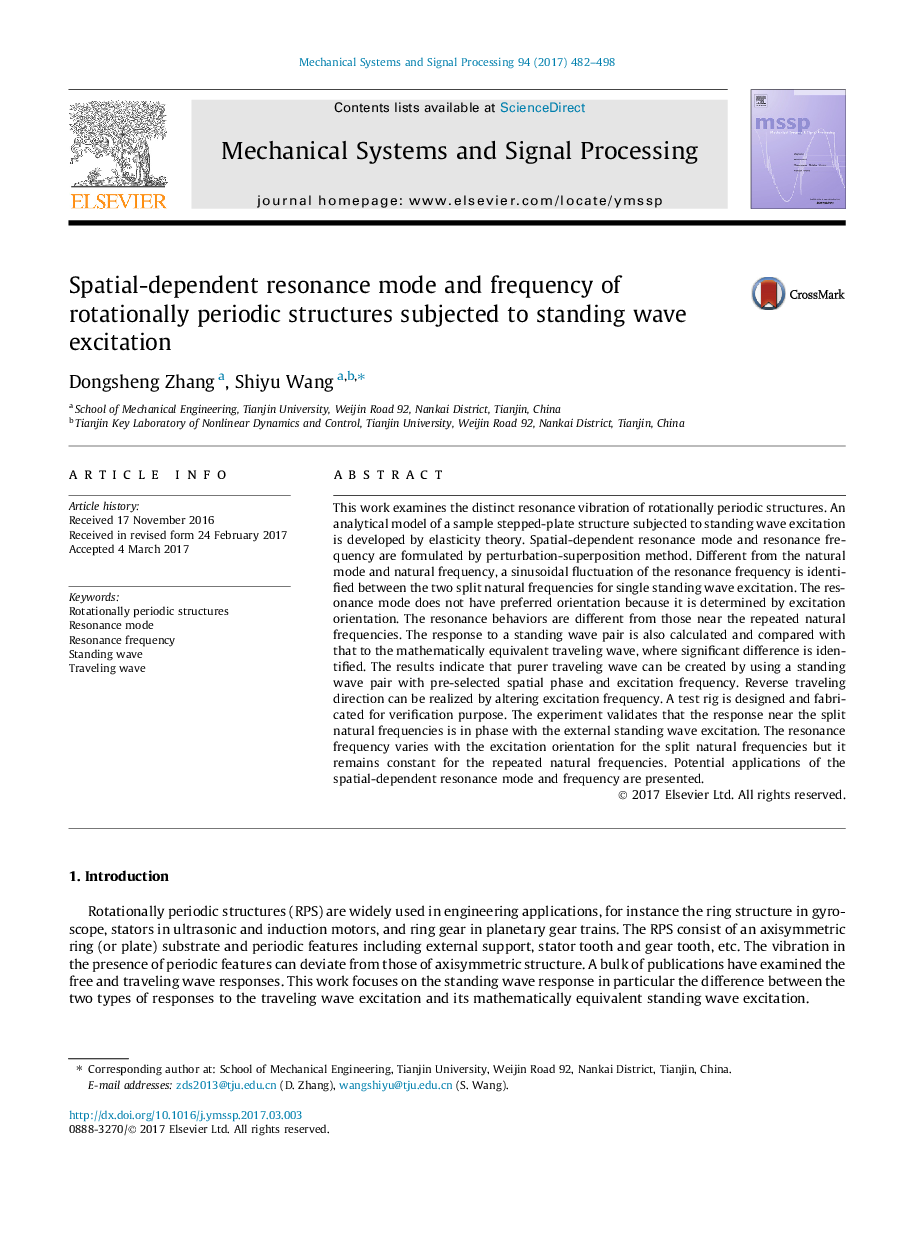| Article ID | Journal | Published Year | Pages | File Type |
|---|---|---|---|---|
| 4976953 | Mechanical Systems and Signal Processing | 2017 | 17 Pages |
Abstract
This work examines the distinct resonance vibration of rotationally periodic structures. An analytical model of a sample stepped-plate structure subjected to standing wave excitation is developed by elasticity theory. Spatial-dependent resonance mode and resonance frequency are formulated by perturbation-superposition method. Different from the natural mode and natural frequency, a sinusoidal fluctuation of the resonance frequency is identified between the two split natural frequencies for single standing wave excitation. The resonance mode does not have preferred orientation because it is determined by excitation orientation. The resonance behaviors are different from those near the repeated natural frequencies. The response to a standing wave pair is also calculated and compared with that to the mathematically equivalent traveling wave, where significant difference is identified. The results indicate that purer traveling wave can be created by using a standing wave pair with pre-selected spatial phase and excitation frequency. Reverse traveling direction can be realized by altering excitation frequency. A test rig is designed and fabricated for verification purpose. The experiment validates that the response near the split natural frequencies is in phase with the external standing wave excitation. The resonance frequency varies with the excitation orientation for the split natural frequencies but it remains constant for the repeated natural frequencies. Potential applications of the spatial-dependent resonance mode and frequency are presented.
Related Topics
Physical Sciences and Engineering
Computer Science
Signal Processing
Authors
Dongsheng Zhang, Shiyu Wang,
